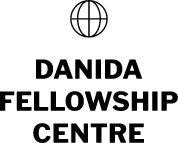Transport
Tickets and travel cards in the Copenhagen area
You can choose between different types of tickets and travel cards which are all valid for buses, trains and the Metro in the Greater Copenhagen area. Your choice depends on how and how much you wish to travel during your stay.
Staying outside Copenhagen you will find information about regional and local transport on websites as well.
One Ticket for all
Buses, trains, and Metro are punctual and regular in Copenhagen, which means you will rarely have to wait long if you do not go far from Copenhagen. The transport system is also easy to become familiar with, because buses, trains and the Metro operate a handy common fare system, which allows transfer between the three on the same ticket.
You will be equipped with a travel card “Rejsekort”, if you attend one of the short-term courses in Denmark. The card can be used on the above means of transport, however, every time you change during one journey you need to check-in again (even when changing between two buses or two Metro-trains), whereas you only check out when you finish your journey.
Read more about the Rejsekort in English
Please note that passengers riding on trains, metro trains or buses without a valid ticket are liable for paying a penalty fare of DKK 750 (€100)!!!
Buses
Entrance is usually in the front, and exit is at the back and in the middle. Bus stops are marked with yellow signs, and you have to push the red stop button when you wish you get off.
Bus no. 37 runs from the city centre to a stop near the DFC, get off at “Dr. Abildgaards Alle/Thorvaldsensgade”, which is the nearest stop.
Metrolines stop at “Frederiksbergcentret”, the big shopping centre near DFC.
Buses, zones and rules are different outside Copenhagen, i.e. in Aarhus, you enter in the middle or back of the bus, and leave from the front.
S-train
The local trains are called S-trains with 10 lines all passing through the Central Station, which in Danish is referred to as ‘Hovedbanegården’, or ‘København H’. The other main city S-stations are ‘Vesterport’ (West), ‘Nørreport’ (North) and ‘Østerport’ (East).
Metro
Metro might be the fastest public transport in greater Copenhagen. It will only take you a few minutes from the DFC to the City Centre or to other places of interest. A number of Metro-stations are connected to the S-trains.
Journey Planner
You will find information about travel in your place of accommodation. Or you can use this website: here, where you simply plot in your point of departure and point of arrival.
Cycling in the city
One of the first things that many fellows notice after arriving in Copenhagen is the great number of people travelling by bike. Most people in Copenhagen use bikes as their main means of transportation simply because it is the easiest, fastest, cheapest and most healthy way to get from one place to another.
If you are cycling in Copenhagen – or anywhere – this website is a must-see: an in-depth guide to cycling in Copenhagen.
The city bikes in Copenhagen are world famous and many visitors as well as Copenhageners use them as a quick alternative to cars, buses and taxis.
All you have to do is find one of the 110 city bike-racks in the center of the city and pay as you go. Find more about the bike renting here.
For biking around Aarhus and renting a bike in Aarhus you can find more information here:
Since you are probably not accustomed to the city you should pay attention to the laws of the cycle paths. Always keep to the right-hand side of the lane and always look over your shoulder before overtaking others. Signal when you stop by lifting your left hand.
The Danes take cycling seriously and as kind as they can be when you meet them in a shop, pub or workplace, they can be short-tempered if you disrupt the flow of the traffic, when they are hurrying to or from study and work.
Always wear a helmet, and remember to lock your bike when you leave it.
